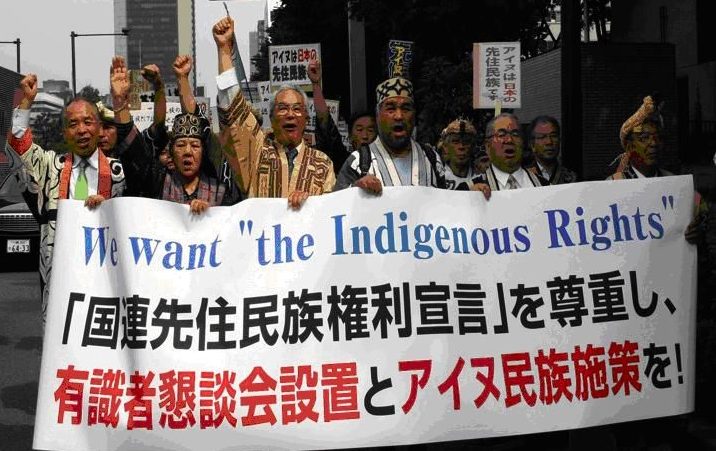Biographical Timeline | Leadership Qualities | Ainu Sovereignty | References
The Ainu people are a small Indigenous nation located in Northern Japan. For centuries the Japanese government and citizens of Japan aggressively discriminated against the Ainu people while creating policies that forced them to assimilate. In 1899, the Japanese government enacted the Hokkaido Former Aborigines Protection Act essentially creating a legal way for the government to assimilate the Ainu people into Japanese society. For nearly a century, the Ainu people were forced to leave behind their traditions and culture and instead adopt those of the Japanese. Like boarding schools across the United States forced upon Native American children, Ainu children were forced to go to Japanese schools where they were taught the Japanese language and traditions rather than their own. The Ainu language and other important cultural practices were not allowed. Despite the fact that the goal of this act was for the Ainu to assimilate into society, many Japanese people still discriminated against all Ainu people, no matter how great an effort they made to cooperate and appear more Japanese.
The Hokkaido Former Aborigines Protection Act was finally removed in 1997 and replaced with the Ainu Cultural Promotion Law. This law worked to promote the diversity that the Ainu culture brought to Japanese society. This forced both the local and national government to make efforts to promote and protect the Ainu culture. In 2007, the United Nations also made a declaration that outlined rights of Indigenous people, which Japan chose to agree to and support. Both these acts represent the apparent support that Japan had for creating a more inclusive and diverse population. The Japanese government recognized that their economy may see improvements by creating and supporting certain polices that mitigated the discrimination against the Ainu people.

In response to the acts the Japanese government adopted in opposition to assimilation, they chose to create a museum putting the Ainu people’s culture on display for everyone to see and learn from. This action at first appeared to many to be a great act to repair the poor relationships between the Ainu and Japanese. However, many Ainu people were very unhappy and actually in opposition to the purpose in which the museum, Upopoy, was meant to serve. While the government effectively displayed the Ainu culture, they still failed to help actually create programs to that helped the Ainu people. They failed to help increase jobs for the Ainu people, so many still remained in poverty even after the museum was built. The museum failed to actually provide any help to improve the lives and ensure the futures of the Ainu culture, most notably the future of their language. Almost as importantly, the government never out-right stated that their acts of assimilation and discrimination were wrong. This failure to apologize and admit to their wrong-doing goes to show that the intentions of the Japanese government were not to actually improve the livelihood of the Ainu, but instead improve their own economy and worldly appearance.
Matika Wilbur’s work and efforts as an Indigenous activist focuses on creating a new narrative and image of what an Indigenous person looks like and is. The many photographs she has taken during her travels across the United States for Project 562 has shown the diversity of Indigenous people. The pictures show people of all ages and different genders. With each photo, she attaches a statement describing the pictured individuals, including their jobs, families, activist efforts and various other unique attributes. Wilbur clearly shows through her images how powerful native people are and how giving them their own voices relays a stronger message than having non-native individuals attempt to interpret what is being said. During a Ted Talk she spoke at, she mentioned how the media represented native Americans through characters such as Tonto played by Johnny Depp and many different adaptations of the “brave” or “savage” Indian. Wilbur wants to change this imagery to make sure Indigenous people are represented correctly.

Given Matika Wilbur’s avid pursuit for representation of Indigenous people in the United States, she would stand with the Ainu people in opposition of Upopoy. She would also oppose the actions of the Japanese government that clearly show their true negative intentions concerning the Ainu people’s future success. Wilbur’s main priority as an activist is to give the people she is supporting their own voice, rather than having the government or other majority groups speak for them. Given her clear perspective on what needs to happen in the United States with Native American representation, Matika Wilbur would fully support the Ainu’s efforts. She would completely agree that the Japanese government needs to take accountability for their prior actions while helping to support the education and job availability for the Ainu people.
